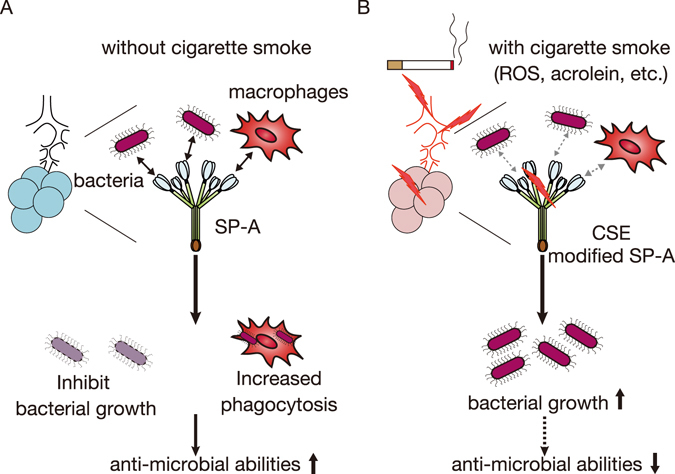Figure 6.

A model of the possible involvement of damaged SP-A in CS-induced innate immune dysfunction. (A) The lung is continuously exposed to airborne pathogens. SP-A protects the lung by inhibiting bacterial growth and inducing macrophage phagocytic activity12. (B) SP-A damage by CS attenuates its ability to inhibit bacterial growth and induce macrophage phagocytosis. The structural and functional disruption of SP-A may thus contribute to CS-induced innate immune dysfunction.
